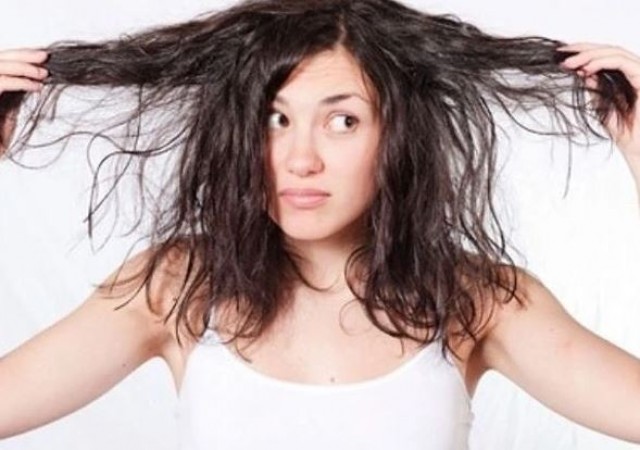
Hair care is an essential aspect of grooming and personal hygiene. While many people have reservations about applying oil to their hair due to concerns about stickiness and greasiness, hair oil massage offers a multitude of benefits for hair health. This article aims to shed light on the advantages of hair oiling and provides a step-by-step guide on how to effectively apply hair oil for maximum benefits.
The Importance of Hair Oil
Hair oiling, a practice that has been followed for centuries in various cultures, involves massaging specific oils into the scalp and hair. The primary purpose of this practice is to nourish the hair and scalp, promoting healthy growth and preventing common issues like hair fall and dandruff.
Different types of oils can be used for hair oiling, but the choice of oil depends on individual preferences and hair type. Some popular options include coconut oil, olive oil, and castor oil, all of which are rich in nutrients that benefit the hair. However, if you're specifically looking to combat hair fall, oils like mustard oil, coconut oil, olive oil, and sesame oil can be combined for a potent blend.
Benefits of Hair Oil Massage
Nourishment and Hydration: Hair oiling provides essential nourishment to both the scalp and hair strands. It helps in retaining moisture, preventing dryness and brittleness, which can lead to hair breakage.
Improved Blood Circulation: Massaging the scalp while applying hair oil stimulates blood circulation. This increased blood flow delivers more nutrients to the hair follicles, promoting healthy hair growth.
Strengthening of Hair: Regular hair oiling can strengthen the hair shaft, reducing the chances of hair fall and breakage. Stronger hair is less prone to damage from environmental factors.
Dandruff Control: Oiling the scalp helps control dandruff and reduces itchiness. Certain oils, like neem oil and tea tree oil, have anti-fungal properties that can effectively combat dandruff.
Preventing Hair Fall: Massaging the scalp with hair oil helps to reduce hair fall by strengthening the hair roots. The nourishment provided by the oil also prevents premature hair fall.
Enhanced Shine and Luster: Well-nourished hair tends to have a natural shine and luster. Hair oiling can make your hair look healthier and more vibrant.
Split End Prevention: Regular application of hair oil can help prevent split ends, which can lead to frizzy and unmanageable hair.
Step-by-Step Guide to Hair Oil Massage
Choose the Right Oil: As mentioned earlier, the choice of oil depends on your hair type and specific needs. Popular options include coconut oil, olive oil, castor oil, and a combination of oils like mustard oil, coconut oil, olive oil, and sesame oil for hair fall control.
Warm the Oil: Place the chosen oil in a heat-resistant container and warm it using a double boiler. Avoid heating the oil directly over an open flame. Heating the oil helps it penetrate the hair and scalp more effectively.
Prepare Your Hair: Before applying oil, make sure your hair is free of tangles. Comb your hair to remove any knots and ensure that it's easy to work with.
Start the Massage: Part your hair into sections to ensure that the oil is evenly distributed. Begin by applying the warm oil to your scalp using your fingertips. Apply gentle pressure and use circular motions to massage the oil into your scalp. Be sure to cover the entire scalp.
Work Down to the Ends: After massaging the scalp, work the remaining oil through the length of your hair. Pay special attention to the tips, where split ends tend to occur.
Leave the Oil On: Once you've applied the oil, leave it on for at least 2-3 hours. For even better results, you can leave it on overnight. Use a shower cap or a towel to cover your hair and protect your pillow.
Shampoo and Condition: After the recommended time, wash your hair with a mild shampoo. You may need to shampoo your hair twice to ensure that all the oil is removed. Follow up with a conditioner to lock in moisture.
Frequency: To reap the maximum benefits of hair oiling, aim to oil your hair at least once a week. You can adjust the frequency based on your specific hair needs.
Hair oiling is a time-tested practice that offers numerous benefits for hair health. It provides nourishment, strengthens the hair, prevents hair fall, and enhances shine and luster. By following a simple step-by-step guide, you can incorporate regular hair oil massages into your hair care routine, ensuring that your locks remain healthy and beautiful. So, don't let the misconception of greasiness deter you from this valuable practice – embrace the tradition of hair oiling and enjoy the benefits of luscious, vibrant hair.
Yogurt in Your Skin Care: How to Use Yogurt for Skin Health?
High Blood Pressure: 3 Crucial Indian Spices for Lowering BP Naturally